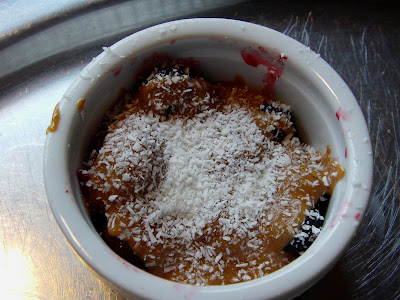This is my third post in the series about Herbal Antibiotics. I have decided to cover 15 antibiotic herbs in several posts. As mentioned in
the first post, herbs are more complex than antibiotics and the bacteria has a harder to time to develop resistance to herbs.
In the second post I list the 15 top antibiotic herbs based on the book,
Herbal Antibiotics by Stephen Harrod Buhner. Today I will focus on the herbs Acacia, aloe, and cryptolepsis.
According to Stephen Harrod Buhner:
Acacia (Acacia spp.)Acacia is part of the
Mimosaceae family. All the parts of the plant can be used and they can be picked at various times of the year. The pods can be gathered when they are green, the flowers when in bloom, and the roots can be chopped into small pieces before drying. The gum can be collected by cutting a line into the lower part of the bark.
Some of Acacia's therapeutic actions are:Antimalarial, astringent, antibacterial, antimicrobial, anticatarrhal, anthelmintic, antifungal, anti-inflammatory and sedative.
Acacia is active against:Staphylococcus aureus,
Salmonella spp.,
Pseudomonas aeruginosa, malaria,
Shigella dysenteriae,
Escherichia coli,
Proteus mirabilis,
Neisseria gonorrhoeae.
Buhner says Acacias are useful for excessive mucus, diarrhea, catarrh, hemorrhage, gum infections, dysentery and gastrointestinal ulceration. There are different species of Acacia and some species are used for parasitic infestation in some parts of the world. Acacia is not used as much in the United States, but is widely used for its medicinal properties in other parts of the world. Acacia can found in the south and as far north as Kansas and all the way between California and Florida.
Acacia can be used as powder, tea, or wash. Pods, stems, and and leaves should be used powdered. Buhner recommends 3-12 cups a day for malaria, diarrhea, and dysentery. The leaves and flowers should be used as tea for gastrointestinal tract inflammation. The roots should be used to make mucilaginous tea that is antibacterial and anti-inflammatory. Tea of stems, pods, and leaves can be used to wash wounds according to Buhner.
Mesquite (
Prosopis julifera) is a suitable alternative to Acacia if you can't find it. It may be used identically.
Aloe ( Aloe vera and other species)Aloe is part of the
Liliaceae family. It is usually the fresh juice that is used but sometimes the dried plant is used internally. The fresh plant leaves can be used anytime. The leaves are cut open and the juice is applied to burns and wounds.
Some of Aloe's therapeutic actions are:External use: Antibacterial, antimicrobial, antiviral, wound healing, anti-ulcer, and inflammatory.
Internal use: Purgative, and it also stimulates smooth muscle contractions.
Aloe is active against:Staphylococcus aureus, Pseudomonas aeruginosa, Herpes simpex 1 and 2
.
Buhner says that Aloe and honey can be applied externally to speed wound healing to prevent infection. Burn victims are extremely prone to Staphyloccus aureus infections. Since Aloe is a liquid it will keep the tissue moist and restore lost body fluid. It will also soothe the damaged tissues.
Slice
open the leave of the fresh plant and apply liberally to a burn or wound. Aloe stimulates smooth muscle contraction when taken internally.
Honey can be used as an alternative to Aloe. Echinacea or St.John are less desirable choices to be used for wound healing.
Cryptolepsis (Cryptolepsis sanguinolenta)Cryptolepsis is part of the
Asclepiadaceae family.
The roots are used and they can be harvested anytime of the year. Cryptolepsis is a shrub found in several parts of Africa.
Some of Cryptolepsis' therapeutic actions are:Antiparasitic, antimalarial, antibacterial, and antifungal.
Cryptolepsisis active against:Staphylococcus aureus, malaria,
Shigella dysenteriae,
Escherichia coli,
Neisseria gonorrhoeae,
Candida Albicans, Camphylobacter, both gram-positive and gram-negative bacteria.
According to Buhner, Cryptolepsis has been used for centuries by African healers in treatments of fevers, bloody diarrhea, and malaria. Human clinical trials have shown that Cryptolepsis to be potent for malaria.
Cryptolepsis can be used as powder, capsules, tincture, or tea. Crushed powder can be used externally for fungal or bacterial infections.
For malaria, Buhner recommends to use
Artemisia annua or
A. absinthium,
Brucea javanita,
Uvaria spp., or the bark of
Cinchona spp as alternatives to Cryptolepsis.
The book,
Herbal Antibiotics by Stephen Harrod Buhner gives you detail information about each herb on how to prepare them, what parts to use, and how much of each herbs to use for various ailments.
Stay tuned! I will cover the next three herbs on the list in more detail next time. You'll find out how to use them and for what conditions they are traditionally used for.
Source: Herbal Antibiotics by Stephen Harrod Buhner.
This post is linked to:
Sunday SchoolFat Tuesday Healthy 2Day Wednesday Frugal Days, Sustainable Ways Wildcrafting Wednesday Simple Lives Thursday

















